Industry Audit
For the fifth year in a row, Pharm Exec invites Professor Bill Trombetta of St. Joseph's University to analyze the pharma industry's financial performance with a battery of business metrics old and new. The highlights: Two top biotechs race neck-and-neck for first place, Forest delivers another strong performance, and AstraZeneca squeezes past Johnson & Johnson and GlaxoSmithKline into the top four for the first time ever. And the winner is . . .
For the fifth year in a row, Pharm Exec invites Professor Bill Trombetta of St. Joseph's University to analyze the pharma industry's financial performance with a battery of business metrics old and new. The highlights: Two top biotechs race neck-and-neck for first place, Forest delivers another strong performance, and AstraZeneca squeezes past Johnson & Johnson and GlaxoSmithKline into the top four for the first time ever. And the winner is . . .
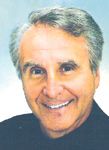
Bill Trombetta
Company of the Year #1 Amgen
Last year, Genentech and Amgen tied for first place. This year, Amgen pulled ahead based on strong performances in several key metrics. Amgen had outstanding performances in Profit Margin (29.6 percent) and Revenue per Employee (a remarkable $756,098), and placed second in ratios of Enterprise Value to Total Sales, Earnings per Share, and the audit's main measure of innovation—Revenue from Intellectual Assets. One surprise: Though Amgen has almost twice Genentech's sales, Genentech has an Enterprise Value to Sales ratio almost double Amgen's, which may mean investors believe Amgen's portfolio will provide slower growth than Genentech's.

PHARM EXEC'S FIFTH ANNUAL strategic industry audit analyzes the 2005 financial performance of 16 companies that are publicly traded on stock exchanges and file 10-K reports with the Securities & Exchange Commission (or 20-F reports, in the case of foreign companies). As in past years, the audit goes beyond standard accounting and financial statements, drawing on newer and oftentimes more meaningful metrics, such as sales per employee and percentage of income driven by intellectual capital. Data were gathered primarily from 10-Ks and 20-Fs. In addition, we consulted databases such as finance.yahoo.com, and secondary sources such as Fortune, Forbes, BusinessWeek, In Vivo, and The Wall Street Journal. Non-annual data were collected the first week of April 2006.

METHODOLOGY
Aiming to compare companies' performance, this report omits a few companies that are or appear to be publicly traded, but are not comparable with the rest of the group: extremely diversified firms (such as Procter & Gamble), narrow-focus companies (such as Novo Nordisk), companies that manufacture primarily generics (such as Teva), firms with unconventional ownership structures (like Roche), and companies whose financial reporting doesn't mesh with US standards (like Japanese drug firms).

Overall Rankings
Companies were assigned scores based on their rankings in 13 key metrics: The company that ranked first in a given metric received 16 points, the second-place company 15, and so on.
Not all metrics are of equal value. They were weighted 3 through 7, with 3 reflecting the least weight and 7 the most. A company receiving 10 ranking points on a metric weighted at 5, for example, received 50 weighted points, which were totaled for overall rankings. Easily "managed" metrics (Price to Earnings and Earnings per Share) are weighted 3. Some values (Annual Global Rx Sales) are not useful metrics until they are compared with other values (year-ago sales). The company with the most weighted points is our company of the year.
NOTES ON THE METRICS
The meat of the audit is in the charts that appear on these pages. But as always, they present some features worth pointing out in detail.

Prescription Drug Sales The two charts on the left cover 2005 Rx drug sales and change in prescription drug revenue from 2004 to 2005. In overall Rx sales, Pfizer once again leads at $44.3 billion.
Sales growth, however, is the important metric, especially for an industry that has dropped from double- to single-digit percentage growth. The major pharmas, with some exceptions, surpassed overall industry sales growth. Genentech grew by 47 percent, with Novartis (35 percent) coming in second, and Forest (21 percent) third. At the bottom of the list were Merck and Abbott, with 2 percent growth rates, Johnson & Johnson at 1 percent, and two companies which lost sales: Bristol-Myers Squibb, down 2 percent, and Pfizer, down 4 percent.
R&D Spend Pfizer places first with a total R&D spend of $7.4 billion, while Forest Labs spends the least—$293 million. But it is the ratio of R&D spend to total drug sales that has more meaning as a metric in our audit. Intuitively, the higher that ratio, the more the firm is proceeding strategically as an innovator.
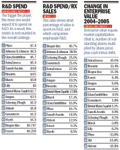
By that standard, Biogen Idec is the industry leader, spending 46.7 percent of sales on R&D. Despite their high absolute dollar spend on R&D, Pfizer and GSK come in toward the bottom in terms of relative strength. The average for the group was 19.8 percent. Only Forest and Wyeth, at 9.2 percent and 8.5 percent, respectively, dipped below 10 percent.
Enterprise Value This relatively new metric (chart not pictured) has become popular because it includes the impact of a firm's debt and stock equity in its capital structure. It is calculated as follows: market capitalization (number of shares outstanding multiplied by stock price) plus cash, minus debt.
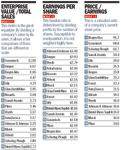
Enterprise Value (EV) reflects shareholder value. And change in EV (EV2005 minus EV2004), one of the categories weighted 7 for its importance, shows which firms created shareholder value and which firms destroyed it.
Pfizer's EV is the highest in the industry at $177.5 billion, reflecting a firm that does over $50 billion in sales. Sanofi-Aventis and GSK each booked EVs of $150 billion or more in 2005. In contrast, Amgen, this year's winner, has an EV just one third the size of Pfizer's at $62 billion, and Genentech, the runner up, booked an EV of just $29 billion. Forest, which outperformed 12 other companies in the audit, ranked 15th in EV at $15 billion.
So although Pfizer's EV is huge, its shareholder value has decreased by 13.8 percent from 2004. AstraZeneca (with a 15.5 percent increase) and Novartis (13.4 percent) led the industry in creating shareholder value. Abbott and J&J tied for the last place. Each destroyed 15.8 percent of shareholder value. Eleven firms added to or created shareholder value between 2004 and 2005; five firms destroyed it.
We expect bigger companies to have higher EVs. One way to normalize differences in scale is to divide EV by EBIDTA (earnings before interest, depreciation, taxes, and amortization).
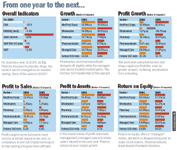
From one year to the next...
But here we divide EV by Sales, which is the great equalizer for comparing large and small companies. Genentech takes first place with a ratio of 12.93, followed by Amgen with 6.57. The interesting point: Though Amgen has almost twice Genentech's sales, Genentech's EV to Sales ratio is almost twice as high as Amgen's, which may mean that investors believe Amgen's drug portfolio will provide slower growth than Genentech's.
Biogen Idec, Forest Labs, and Lilly achieved noteworthy EV to Sales performances in 2005, finishing in the top third of the field.
Earnings per Share and Price to Earnings Multiple J&J comes in with the highest Earnings per Share ratio at $3.46; Biogen-Idec had the second lowest EPS ($0.47) and by far the highest Price to Earnings Multiple: 95.2. Genentech again scored high, with a P/E of 68.8. Among the conventional pharma companies, Schering-Plough led the pack with a P/E of 66.7.
Gross Margin This is an important metric because it shows who can command premium pricing. In an environment hostile to high prices, the ability to charge them is associated with innovation. Biogen Idec achieved the best pricing in 2005 with a gross margin of 85.4, followed closely by Genentech at 85.2 percent and Amgen at 83.5 percent. In that fast pack is Pfizer, the only non-biotech with a gross margin over 80 percent.

Profit to Sales The profit margin shows net profit before taxes after cost of goods sold and operating expenses are deducted. Amgen is head and shoulders above its competitors at 29.6 percent. Number two in profitability is Forest Labs at 23.8 percent. Merck and J&J both topped 20 percent, while Biogen Idec and Schering-Plough were the only companies to dip below 10 percent.
Sales to Assets This important metric measures how productive a firm is in managing its assets. As in the last four years, J&J stands out on asset management, followed by Forest and Abbott. The bottom of the list, meanwhile, is an interesting mix of giants and biotechs: Pfizer, Amgen, GSK, Sanofi-Aventis, and Biogen Idec.

Profit to Assets Multiplying the profit margin (Profit to Sales) by asset turnover (Sales to Assets) results in Profit to Assets or return on assets. This metric shows which firms excel at margin management (Profit to Sales) and asset management (Sales to Assets). Excelling at both is the Holy Grail. Forest finished in second place on both metrics. GSK, AstraZeneca, J&J, and Forest take the top spots in the Profit-to-Assets metric.
Assets to Net Worth Assets to Net Worth is not a metric in our audit. It merely shows how much debt a firm carries. Drug companies are very conservative in taking on debt. As in the past few years, Wyeth carries the most debt. Even so, its ratio of 2.99 is still very conservative.

Profit to Net Worth Profit to Net Worth is calculated by multiplying Profit to Assets by Assets to Net Worth. This shareholder-value performance metric varies with a firm's debt load. Merck, GSK, and Wyeth placed in the top three.
Revenue per Employee Sales per employee is a metric that stock analysts are using more and more. No surprise that the three biotechs blow everyone else away. With their relatively small sales forces and astronomical prices, Amgen, Biogen Idec, and Genentech are in a class by themselves. Their work forces are even more productive than research firms.
Finishing in fourth place in employee productivity is Forest with $623,053 per employee—almost in biotech range—followed by Pfizer, BMS, and J&J.
Proportion of Earnings Driven by Intellectual Capital In the past, we have used a different metric: number of products less than five years old. That metric is problematic for a number of reasons. One problem is that a one-drug firm like Forest or Biogen Idec, that may have had its drug approved within five years, shows a 100 percent revenue from new drugs—a bit misleading. Conversely, a one-trick firm whose new drug is in its sixth year would register zero percent.
More useful would be a metric that takes into account a company's intellectual capital. Such a metric would encompass the value of drug brands, the corporate brand, pipeline, and other indicators of innovation that may not be limited to technology or science.
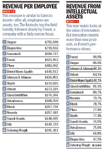
One such approach is based on the work of Baruch Lev, Accounting Professor at New York University's Stern School of Business (see "Accounting Gets Radical," Fortune, April 16, 2001, for an excellent, user-friendly article on his methodology).
Lev starts with a firm's net income before taxes. Then he allocates how this income is derived over the three basic kinds of assets that produce sales: cash assets; property, plant and equipment assets; and intellectual property. According to Lev, cash assets earn an average of 4.5 percent. So 4.5 percent multiplied by a firm's cash assets gives an approximation of income due to cash assets.
Property, plant, and equipment over the years, net of depreciation, gets a similar treatment. They earn on average 7 percent. So 7 percent times the value of property, plant, and equipment gives you the income driven by these assets.To calculate the return on intellectual property, take net income before taxes, subtract the return on income due to cash assets and income due to property, plant, and equipment, and divide by net income before taxes.
Using that formula, the "smartest" drug firm for 2005 was Forest with 90 percent of its income driven by "innovation," followed by Amgen, J&J, Abbott, BMS, GSK—with Genentech in 7th place. But how can a firm like Forest, which spends virtually nothing on R&D, but has the acumen to spot sleepy, unexciting drugs that other companies pass over, be the "smartest"?
To make sense of this, we turn to a fascinating study reported by BusinessWeek (April 24, 2006) on the 100 most innovative companies in the world.
BusinessWeek, in collaboration with the Boston Consulting Group and IBM, surveyed 1,070 top corporate executives at global corporations. They asked 27 questions on innovation and innovation metrics. To avoid bias, the execs were asked to identify the most innovative company outside their own industries.
The drug industry likes to wear innovation on its sleeve. But these corporate executives did not see it that way. No drug firm made the top 25—but IKEA, Target, and Starbucks did. Genentech, the first drug firm to crack the 100 most innovative, ranked 27. J&J came in at 53; Pfizer at 55; and Amgen at 87. PepsiCola and Frito-Lay, were perceived as more innovative than J&J, Pfizer, and Amgen. What's the story?
According to BusinessWeek, innovation is more than just new products. For example, Southwest Airlines, number 25 on the innovation ranking, excels at operational excellence. The personification of operational excellence, Wal-Mart, came in at 20. That sounds a lot like Forest, which may not have much expertise in technology but knows how to execute strategy and marketing.
Conclusion
The eternal questions remain: What do size, scale, and R&D spend have to do with performance? It seems, counterintuitively, not much. The largest drug company in sales revenue, Pfizer, was outperformed by a firm that is 1/15th its size, Forest. In terms of R&D spend to sales, Biogen Idec has the highest relative spend but not much to show for it. And Forest, a firm that spends a minuscule amount on R&D, is a top performer. So factors like size, scale, and absolute/relative R&D correlate unreliably to perfomance. Unless, of course, everything turns out as John LaMattina of Pfizer portrayed it in a New York Times interview: A golden age of innovative drugs is right around the corner. One can hope that new age comes sooner rather than later.
Bill Trombetta is professor of pharmaceutical marketing and strategy at the Erivan K. Haub School of Business at St. Joseph's University in Philadelphia. He can be reached at dtrombet@aol.com

The Misinformation Maze: Navigating Public Health in the Digital Age
March 11th 2025Jennifer Butler, chief commercial officer of Pleio, discusses misinformation's threat to public health, where patients are turning for trustworthy health information, the industry's pivot to peer-to-patient strategies to educate patients, and more.
Navigating Distrust: Pharma in the Age of Social Media
February 18th 2025Ian Baer, Founder and CEO of Sooth, discusses how the growing distrust in social media will impact industry marketing strategies and the relationships between pharmaceutical companies and the patients they aim to serve. He also explains dark social, how to combat misinformation, closing the trust gap, and more.